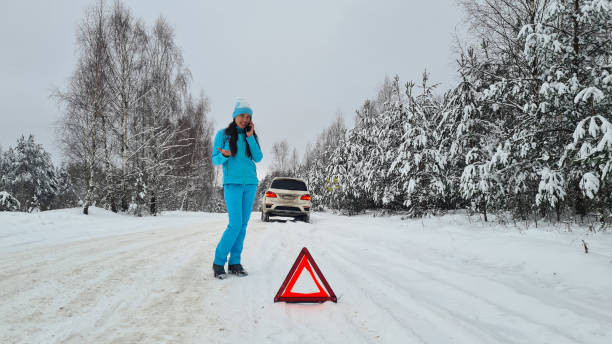Battling the Frost: Why Is Driving on Ice So Dangerous?
Introduction:
As winter unfurls its icy grip, the roads transform into precarious pathways that challenge even the most seasoned drivers. Ice, often invisible and treacherous, lurks as a silent threat, turning ordinary asphalt into perilous terrain. This seasonal change demands extra vigilance and a shift in driving tactics to navigate safely. Ice subtly accumulates on bridges, overpasses, and shaded areas, creating slick surfaces that can surprise even the most careful drivers. This hazard not only increases the risk of accidents but also tests the limits of vehicle control and driver skill.
Understanding the Threat: The Hidden Dangers of Ice
Ice’s most dangerous trait is its invisibility. Often, it forms a thin, transparent layer known as black ice, barely detectable and deceptively hazardous, especially during light snow or freezing drizzle. This hidden menace can catch drivers off guard, leading to unexpected slips and slides that may result in severe accidents. The challenge lies in recognizing these icy patches before encountering them, as they blend seamlessly with the road, mirroring the asphalt’s color and texture. Understanding how and where ice forms can help drivers anticipate and react appropriately to these dangerous conditions.
The Right Response: Navigating Icy Conditions
The natural instinct to slam on the brakes when you hit a patch of ice is strong, but this reaction is more likely to send your vehicle spinning out of control. Instead, keep a firm yet gentle grip on the steering wheel and tap the brakes lightly, maintaining control as you slow down. Abrupt actions can reduce traction dramatically, increasing the risk of an accident. It's crucial to adjust your driving style to match the conditions—slowing down, increasing your following distance, and being prepared for longer stopping distances. These cautious measures can be critical in preventing skids and maintaining control on icy roads.
Steer into the Skid: Regaining Control
It’s counterintuitive but crucial—when your car starts to skid, steer gently into the direction of the slide. This technique helps realign your vehicle’s tires with your intended path, allowing you to regain steering control. Mastering this maneuver requires practice and a cool head but is vital for maintaining control on icy roads. The key is to remain calm and avoid overcorrecting, which can lead to further loss of control. Practicing in a safe, controlled environment, such as an empty parking lot, can help drivers become accustomed to the feel of skidding and reacting appropriately to regain control.
Embracing Safety: Proactive Measures for Icy Roads
Driving on icy roads demands not only skill and patience but also a proactive approach to safety. There are several effective strategies you can employ to ensure your safety during the colder months:
Prepare Your Vehicle: Before the onset of winter, it’s crucial to equip your car with the necessary gear to handle icy conditions. This includes installing snow tires, which provide better traction than standard tires, and using tire chains when you expect severe ice and snow. Additionally, ensure your vehicle is winter-ready by checking and replacing antifreeze, as needed. Regular maintenance checks are essential—pay special attention to your vehicle’s brakes, lights, battery, and windshield wipers. These elements are critical to your safety in winter driving conditions and should be in top working order to help you navigate icy roads safely.
Practice Defensive Driving: When driving on ice, adopt a defensive driving mindset. This means maintaining a greater distance than usual between your vehicle and the one in front of you, as stopping distances can increase significantly on icy surfaces. Reduce your speed to correspond with the conditions and avoid any sudden maneuvers such as sharp turns or abrupt braking, which can lead to skidding. Being vigilant and prepared to react to the unexpected can help prevent accidents on slippery winter roads.
Stay Informed and Educated: The more you know about winter driving, the better prepared you’ll be when you face icy roads. Consider enrolling in a specialized driver education program like Get Drivers Ed, which offers courses focused on winter driving techniques. These courses teach you how to prepare your vehicle for winter, how to handle icy skids safely, and how to recognize and react to winter driving hazards. Learning from experienced instructors can provide you with valuable insights and confidence, equipping you with the knowledge to navigate winter roads safely and effectively
Conclusion: Mastering Winter Roads with Confidence
Driving on ice poses significant risks, but with proper preparation and education, you can navigate these challenges safely. Understanding how to react to icy conditions, outfitting your vehicle for winter, and learning defensive driving techniques are all crucial steps. At Get Drivers Ed, we’re committed to helping you become a safe, confident driver, no matter the season.
Don’t let winter driving intimidate you. Prepare, practice, and educate yourself to face icy roads with assurance. Sign up for Get Drivers Ed today and gain the skills you need to handle winter driving with confidence. Join us now and start your journey to mastering the art of winter driving.

